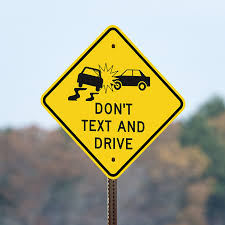
Texting while driving became a violation of state law, effective November 1, 2015. In an effort to reduce vehicular accidents, the Oklahoma Legislature enacted House Bill 1965, which defines a “text message” as a text-based message, instant message, electronic message, photo, video, or electronic mail. In addition to being an unsafe practice that endangers your life and the lives of others, under this new law, you can be pulled over for texting while driving and fined $100. The University encourages all OU community members to adhere to this new law.
On May 6, 1997, Governor Frank Keating signed emergency rules submitted by the Oklahoma Department of Central Services. The rules are pursuant to Title 260 of the Oklahoma Statutes 260:70-9-1, 260:70-11-2, and 260:70-11-3.
Because the University of Oklahoma Health Sciences Center personnel, to include employee, faculty, staff and in some cases students, operate state and/or university vehicles these rules apply.
Primary Requirements
- To operate a vehicle of any type, an individual must have a valid driver's license.
- Driver will use the vehicle only for state or other covered entity business within the scope of the driver's employment/authority.
- Driver will wear his/her safety belt.
- Driver will observe all traffic laws.
- Driver will not allow an unauthorized person to drive the vehicle.
- Consumption of alcoholic beverages or narcotics prior to the operation of a vehicle is prohibited.
General Requirements
- Backing of vehicles where the driver does not have a clear view of the entire area behind the vehicle will be accomplished with the assistance of a guide. If a second person is in the vehicle, he/she should guide the vehicle back using the appropriate hand and voice signals. If the driver is alone, he/she should check the area behind his/her vehicle before backing.
- Drivers will ensure that windows, headlights, taillights, and wipers are clean and operational at all times.
- In order to give ample warning to oncoming and following vehicles, turn signals must be utilized by drivers at all times, when making a turn or changing lanes.
- Do not "tail-gate". When following other vehicles in normal traffic and under good weather conditions, a time gap of two seconds should be allowed.
- On hills, curves, intersections or in any area where your vision is obstructed, do not make a turnabout, i.e., u-turn.
- Vehicles and equipment shall not be parked or left adjacent to the roadway in such a manner as to constitute a traffic hazard to the driving public. Vehicles will not be parked where they will obstruct the sight of other drivers.
Specific Requirements
- It shall be unlawful for any driver of any vehicle to operate said vehicle without a valid drivers license, pursuant to 47 O.S., Section 6-101 et seq. Drivers will carry a valid drivers license at all times, pursuant to 47 O.S., Section 6-112.
- Any volunteer or employee who operates a state or other covered entity vehicle regularly or occasionally is required to report suspension or revocation of his/her license to their agency. Failure of an employee or volunteer to report a change in license status will result in denial of insurance coverage by the Risk Management division in the event of an accident pursuant to 260:70-9-1(3)(B) disciplinary action.
- All items or materials, which may move around during transport by truck or trailer, will be secured or tarped.
- No more than three (3) persons will ride in the front seat of a state or covered entity vehicle. Where only two (2) single seats exist, only one rider may ride in each seat.
- Drivers of state or other covered entity vehicles will drive in a courteous manner at all times.
- Drivers of a motor vehicle involved in an at-fault accident, under Risk Management Administrative Rules 260:70-9-1(3)(G), are required to complete a Motor Vehicle Improvement (MVI) course for the type of vehicle operated within (6) six months of the date of the accident. Failure to complete an approved MVI course shall result in the employee/volunteer being declared uninsurable by the State Risk Management Administrator until such time that the employee/volunteer successfully completes the required course.
- Effective 9/11/2023, under Risk Management Administrative Rules 260:70-9-1(3)(H), any driver of a motor vehicle, while functioning as an agent of the state, that is involved in two at-fault accidents in a six (6) month period, in addition to the above paragraph be declared uninsurable for a period of three (3) months following the second accident.
Maintenance Requirements
- Before operating a state or other covered entity vehicle, the driver is responsible for checking to see that all necessary safety equipment and control devices are in good condition before he/she operates it.